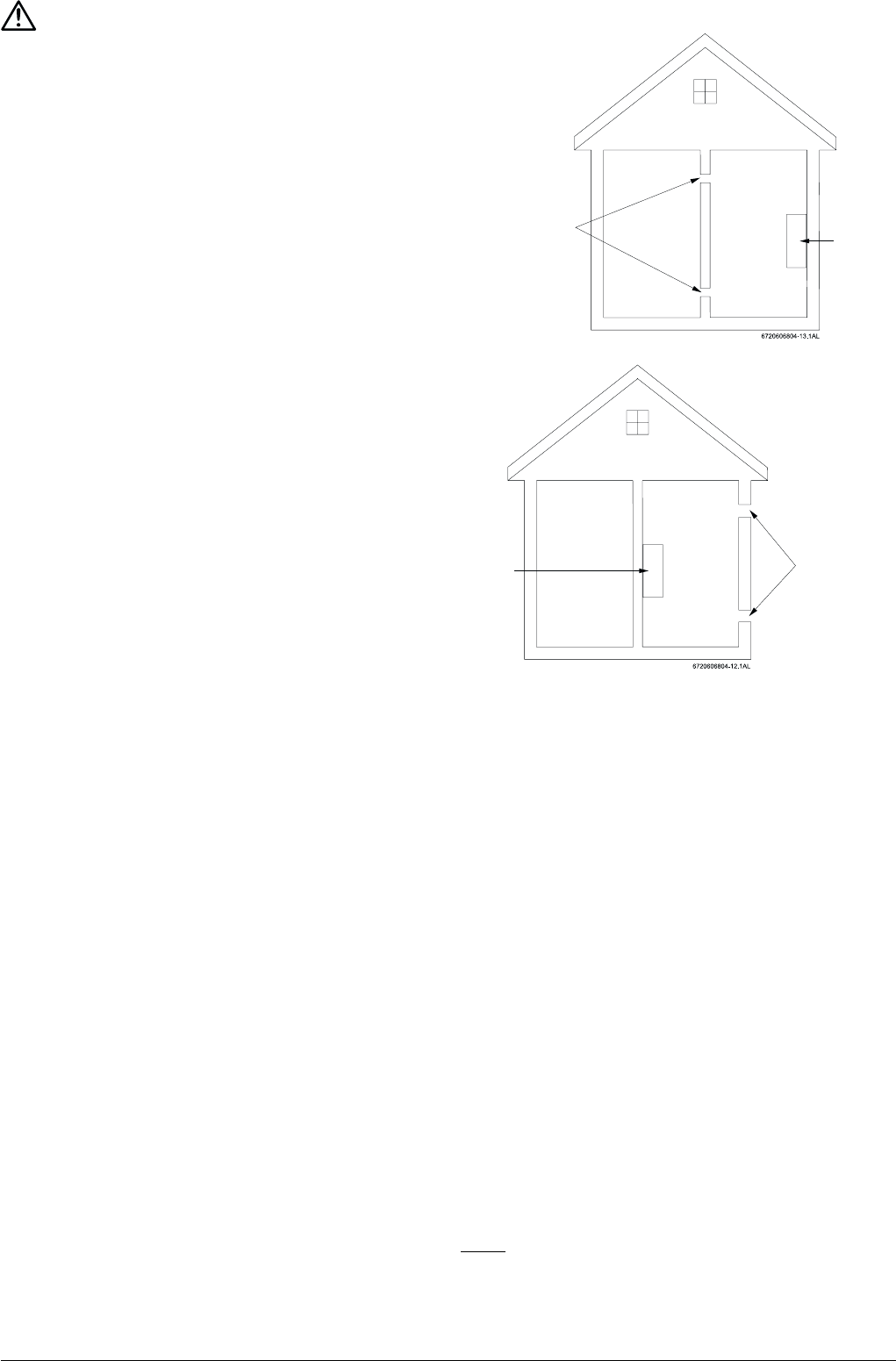
56 720 606 518
WARNING: Flammable materials, gasoline,
pressurized containers, or any other items or articles
that are potentially fire hazards must NOT be placed on
or adjacent to the heater. The appliance area must be
kept free of all combustible materials, gasoline and other
flammable vapors and liquids.
COMBUSTION AIR REQUIREMENTS
The AquaStar water heater holds cold water in its copper
heat exchanger and brass water valve when not in use.
Because of this, any cold air that comes in through the
unit’s vent pipe is capable of freezing these components.
This Installation Manual specifies the minimum vertical vent
pipe and the amount of combustion air required for this unit.
When all requirements are followed, the unit will operate
properly and safely. However, there may still be a risk of
freezing due to negative draft if all the combustion appliances
in the area are not being supplied with a sufficient amount
of make-up air. A wood stove or furnace can rob the make-
up air in the AquaStar’s vent pipe, leaving the cold infiltrating
air capable of freezing the cold water in the AquaStar heat
exchanger. More make up air is the solution. Follow the
instructions on venting and checking adequacy of make up
air. A HVAC specialist should be used to design solutions
for providing more make-up air if necessary.
Observe the following instructions concerning combustion
air.
Appliances located in unconfined spaces:
a) An unconfined space is one whose volume is greater
than 50 cubic feet per 1000 Btu per hour of the combined
rating of all appliances installed in the space. That would
be 5850 cubic feet for the AquaStar 125B “S” alone.
b) In unconfined spaces in buildings of conventional frame,
masonry, or metal construction, infiltration is normally
adequate to provide air for combustion, ventilation, and
dilution of flue gasses.
Appliances located in confined spaces:
The confined space must be provided with two permanent
openings, one commencing within 12 inches of the top and
one commencing within 12 inches of the bottom of the
enclosure. Each opening must have a minimum free area of
one square inch per:
- 1000 Btu/hr if all air is taken from inside the building.
- 2000 Btu/hr if all air is taken from the outside by horizontal
ducts.
- 4000 Btu/hr if all air is taken from the outside by direct
openings or vertical ducts.
Or the confined space must be provided with one permanent
opening or duct that is within 12 inches of the ceiling of the
enclosure. This opening must have a minimum free area of
one square inch per:
- 3000 Btu/hr if all air is taken from the outside by a direct
opening or vertical duct.
Louvers, grills and screens have a blocking effect. If the
effective free area is not known, increase the sizes of your
openings by 75% if your louvers are wood and by 30% if
your louvers are metal. Refer to the National Fuel Gas Code
for complete information. In buildings of tight construction
all air should be taken from outside.
CLEARANCES
The Aquastar 125 B “S” is design certified for installation
on a combustible wall and for installation in an alcove or
closet with the minimum clearances to combustible and non
-combustible construction listed below
A. Top 12 inches (306 mm)
B. Front 4 inches (102 mm)
C. Back 0 inches
D. Sides 4 inches (102mm)
E. Bottom 12 inches (306 mm)
Clearance from vent is dependent upon the clearance rating
of the venting material used. For example, type B-a vent is
approved for 1 inch clearance.
Note: Typically, the minimum clearance to combustible
materials should not be less than 6” for single wall flue
pipe. Note that this clearance can be reduced if combustible
materials are protected as per table VI of the National Fuel
Gas Code or if Type B gas vent is used.
125BS
Air Vents
(5 ½ X 5 ½ in. each)
Air Vents
(10 ¾ X 10 ¾ in. each)
125BS


















